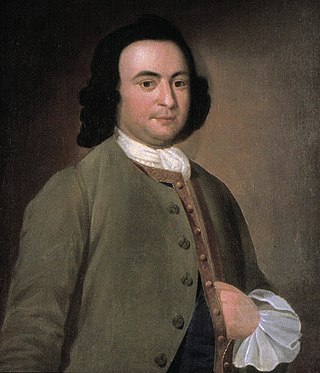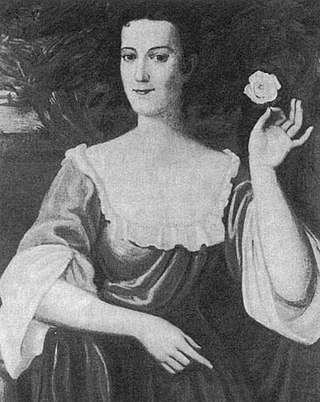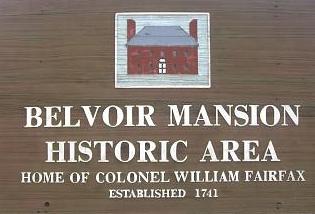
George Mason was an American planter, politician, Founding Father, and delegate to the U.S. Constitutional Convention in Philadelphia in 1787, where he was one of three delegates who refused to sign the Constitution. His writings, including substantial portions of the Fairfax Resolves of 1774, the Virginia Declaration of Rights of 1776, and his Objections to this Constitution of Government (1787) opposing ratification, have exercised a significant influence on American political thought and events. The Virginia Declaration of Rights, which Mason principally authored, served as a basis for the United States Bill of Rights, of which he has been deemed a father.

First Families of Virginia were families in the British colony of Virginia who were socially prominent and wealthy, but not necessarily the earliest settlers. They descend from European colonists who primarily settled at Jamestown, Williamsburg, the Northern Neck and along the James River and other navigable waters in Virginia during the 17th century. These elite families generally married within their social class for many generations and, as a result, most surnames of First Families date to the colonial period.

Thomas Fairfax, 6th Lord Fairfax of Cameron was a British peer, military officer and planter. The only member of the British peerage to permanently reside in Britain's North American colonies, Fairfax owned the Northern Neck Proprietary in the Colony of Virginia, where he spent the majority of his life. The proprietary had been granted to Fairfax's ancestor John Colepeper, 1st Baron Colepeper by Charles II of England in 1649.

Sarah "Sally" Cary Fairfax was the wife of George William Fairfax (1724–1787), a prominent member of the landed gentry of late Colonial Virginia and the mistress of the Virginia plantation and estate of Belvoir. She is well-remembered for being the woman with whom George Washington was apparently in love before his marriage to Martha Dandridge Custis.
John Carlyle Herbert was an American lawyer, planter, military officer in the War of 1812 and politician. He served as a legislator in both Virginia and Maryland, as well as a U.S. Congressman representing Maryland's 2nd congressional district (1814-1818).

The Randolph family of Virginia is a prominent political family, whose members contributed to the politics of Colonial Virginia and Virginia after statehood. They are descended from the Randolphs of Morton Morrell, Warwickshire, England. The first Randolph in America was Edward Fitz Randolph, who settled in Massachusetts in 1630. His nephew, William Randolph, later came to Virginia as an orphan in 1669. He made his home at Turkey Island along the James River. Because of their numerous progeny, William Randolph and his wife, Mary Isham Randolph, have been referred to as "the Adam and Eve of Virginia". The Randolph family was the wealthiest and most powerful family in 18th-century Virginia.
George William Fairfax was a planter in colonial Virginia who represented then-vast Frederick County and later Fairfax County in the House of Burgesses before the American Revolutionary War, by which time he had returned to England. A mentor and good friend of George Washington, Fairfax made opportunities for the younger Washington through his powerful British family, and Washington assisted him afterward by arranging for the sale of his Virginia property after he returned to Britain.

Robert Carter Nicholas was a Virginia lawyer, patriot, legislator and judge. He served in the Virginia House of Burgesses and its successor, the Virginia House of Delegates. He became the last treasurer of the Colony of Virginia, and sat on the first High Court of Chancery, one of the predecessors of the Supreme Court of Virginia.
Thomas Bryan Martin (1731–1798) was an 18th-century English American land agent, justice, legislator, and planter in the colony of Virginia and in present-day West Virginia. Martin was the land agent of the Northern Neck Proprietary for his uncle Thomas Fairfax, 6th Lord Fairfax of Cameron (1693–1781) and served two terms in the House of Burgesses.
Virginia Randolph Cary was an American writer. She was the author of Letters on Female Character, Addressed to a Young Lady, on the Death of Her Mother (1828), an influential advice book.

Bryan Fairfax, 8th Lord Fairfax of Cameron was an American planter and clergyman who also held a Scottish peerage. He was a lifelong friend of George Washington and became the first member of the British peerage to be born in North America after travelling to England and claiming the peerage there. Fairfax was the first cousin once removed of Robert Fairfax, 7th Lord Fairfax of Cameron. He lived in Virginia for his entire life, and was the grandson of Henry Fairfax, a son of Henry Fairfax, 4th Lord Fairfax of Cameron. However, it was not until 1800 that he was confirmed in the title by the House of Lords.

William Fairfax (1691–1757) was a political appointee of the British Crown in several colonies as well as a planter and politician in the Colony of Virginia. Fairfax served as Collector of Customs in Barbados, Chief Justice and governor of the Bahamas; and Customs agent in Marblehead, Massachusetts, before being reassigned to the Colony of Virginia.

Belvoir was the plantation and estate of colonial Virginia's prominent William Fairfax family. Operated with the forced labor of enslaved people, it was located on the west bank of the Potomac River on the present site of Fort Belvoir in Fairfax County, Virginia.

Thomas Fairfax, 9th Lord Fairfax of Cameron (1762–1846), was an American planter who also held a Scottish peerage. Along with his father, on 11 December 1799, he was among the last guests at Mount Vernon before George Washington died.
Towlston Grange is an 18th-century plantation in Great Falls in Fairfax County, Virginia, United States. The estate served as a residence for several prominent members of the Fairfax family. Towlston Grange is located at 1213 Towlston Road in Great Falls. There is a photograph of Bryan Fairfax's Towlston Grange in its unrestored state, taken by "The Rambler" of the Washington, D.C. Evening Star newspaper in 1918, that shows a 1+1⁄2-story clapboarded house built in the English tradition.[4]
Thomas Jefferson, the third president of the United States, owned more than 600 slaves during his adult life. Jefferson freed two slaves while he lived, and five others were freed after his death, including two of his children from his relationship with his slave Sally Hemings. His other two children with Hemings were allowed to escape without pursuit. After his death, the rest of the slaves were sold to pay off his estate's debts.

Brigadier-General John Hartwell Cocke II was an American military officer, planter and businessman. During the War of 1812, Cocke served in the Virginia militia. After his military service, he invested in the James River and Kanawha Canal and helped Thomas Jefferson establish the University of Virginia. The family estate that Cocke built at Bremo Plantation is now a National Historic Landmark.
Bushrod Corbin Washington was a Virginia planter and politician, nephew of Supreme Court Justice Bushrod Washington, and grandfather of Confederate soldier and author Bushrod C. Washington (1839–1919) also discussed below.
Ludwell Lee was an American lawyer and planter who served in both houses of the Virginia General Assembly representing Prince William and Fairfax Counties and rose to become the Speaker of the Virginia Senate. Beginning in 1799, following the death of his first wife, Lee built Belmont Manor, a planation house in Loudoun County, Virginia, which today is on the National Register of Historic Places.
Thomas Blackburn was a Virginia officer, planter and politician who represented Prince William County, Virginia in the last sessions of the House of Burgesses and in most of the Virginia Revolutionary Conventions alongside future general and Virginia Governor Lighthorse Harry Lee. He may today be best known as a correspondent with Presidents George Washington and Thomas Jefferson, as the father of two women who married owners of Mount Vernon plantation, or for his plantation, Rippon Lodge, the remnants of which were placed on the National Register of Historic Places in 1971 and are now operated as a Prince William County park.











